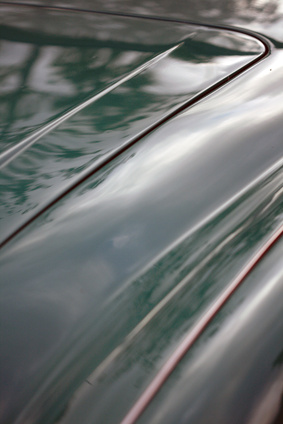
Many things that can go wrong with the application of auto paint. Knowing what causes each of the issues will help with troubleshooting and prevent them from happening again. The most common problems are air entrapment, bleeding, blistering, cracking and peeling. Each of these issues can be corrected and prevented. Troubleshooting auto paint is not difficult if you know what you are looking for. Most problems will result in removing the paint and re-applying it correctly.
To correct air entrapment, sand the area where the air bubbles have popped up or where they rest. Re-apply the paint. Air bubbles are formed when the paint sprayer is held too close to the automobile. Moving the paint sprayer too slowly across the surface of the auto can cause air bubbles to build up behind the paint. Low air pressure in the paint sprayer also can cause air bubbles. Setting up the paint sprayer improperly will cause air to build up in the paint while spraying it on the auto.
In the event of bleeding, remove the original paint on the surface of the auto before applying a new coat of paint. Bleeding occurs when new paint dissolves the pigments of the original paint, causing them to rise into the new paint and blend them together. This results in a decolonization of the new paint, leaving streaks and stains.
To correct blistering, sand the area where blisters are located. Re-apply the paint. In most cases the blistering won’t take place for a couple of months. In extreme cases the paint will need to be removed completely, exposing the metal surface of the auto, before re-applying new paint. Blistering is caused by high humidity in the room where the paint was applied. Reasons for blistering include moisture being trapped behind the paint, improper drying times and painting over oil, dirt or rust.
In case of cracking, remove the areas where cracking appears, and re-apply the paint. Cracks in the paint resembling dried mud are generally caused from applying new paint over a previously cracked surface. Forcing the paint to dry using the air from the paint sprayer will cause the paint to crack. Mixing paint improperly or using too much hardener can result in a cracked finish. Extreme exposure to heat or prolonged sun exposure can over time also can cause the paint to crack.
Peeling can be corrected by removing the paint from the surface of the auto and re-applying a new coat. Peeling occurs when paint removes itself from the surface of the auto. This usually happens when the surface is not properly cleaned before applying the paint. Using the wrong type of primer will cause the paint to improperly adhere to the surface. Applying too many coats of primer or paint will cause the paint to be too heavy for the surface, resulting in the paint pulling away from the surface.